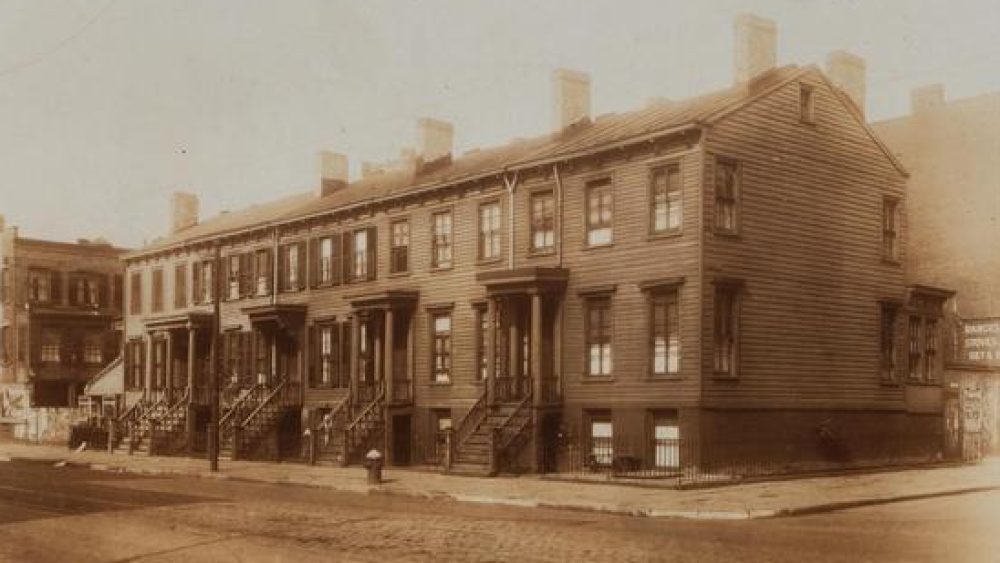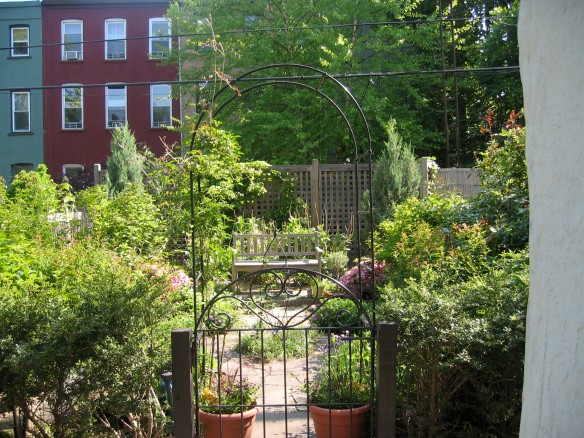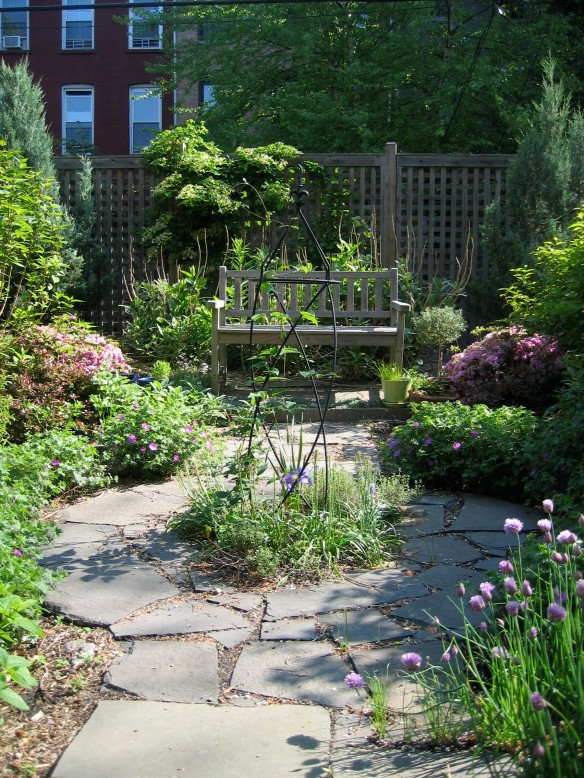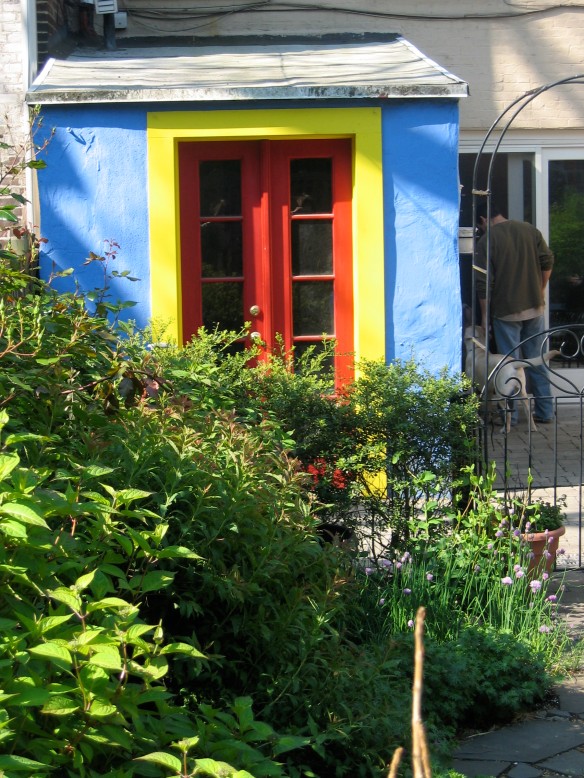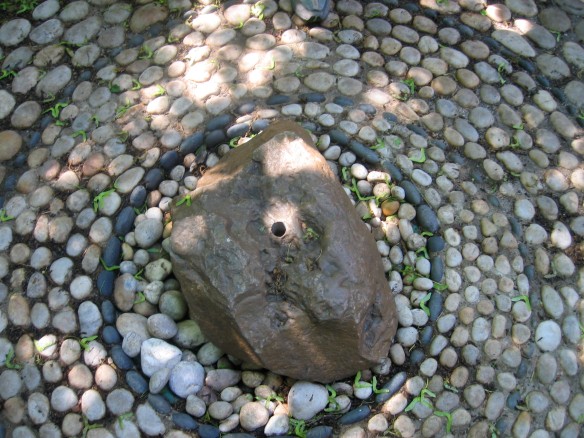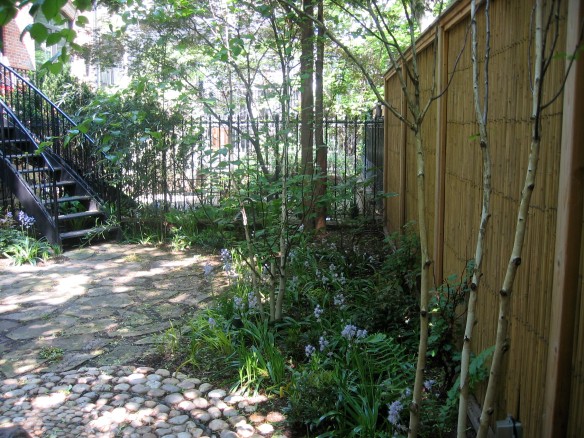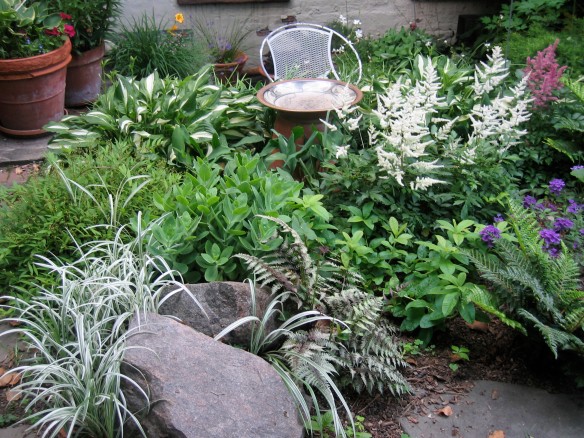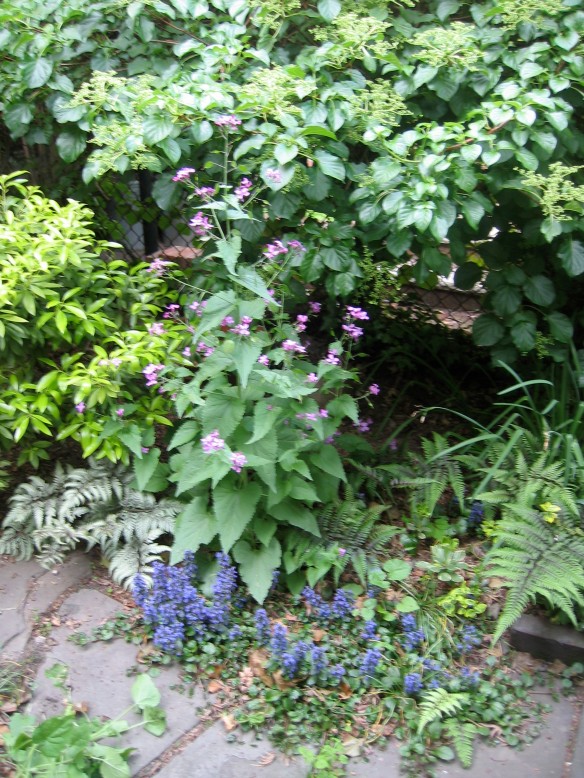HERE’S AN ILLUMINATING EXAMPLE of how a professional landscape architect, working to address clients’ unique needs and properties, comes up with totally individualized solutions.
The professional is Liz Farrell of Park Slope, who has degrees in environmental science and landscape architecture, and has been in business since 1994. The clients are, in the first case, a family with three teens, two dogs, and a small budget; in the second, an empty-nest couple with an 800 square foot, excessively shady backyard.
Sunny, tiny (18’x35’) and cost-conscious, this Park Slope garden was originally a rectangle of struggling lawn with a concrete perimeter.
Four years ago, the homeowners called Farrell to rethink it. They wanted an area for entertaining as well as space for their two yellow Labs to let off steam; they also had a desire for a cottage-style garden full of herbs and flowers.
Today, they have all that. Farrell divided the space into two functional areas: a paved half of Belgian block and a symmetrically planted garden centered on a circular area made of salvaged slate. To save money and raise the back and sides of the garden up a few inches, Farrell re-used the original concrete curb that rimmed the lawn. An arched trellis at the entrance to the planted area and a metal tuteur with clematis in the center provide vertical structure, along with two tall junipers at the back.
Bold primary colors on the house extension (a mud/utility room) provide cheer in all seasons.
Japanese holly divides the paved and planted areas. Summer-flowering shrubs (spirea, astilbe, honeysuckle, azaleas, climbing hydrangea, barberries) border the perimeter; perennials (geraniums, clematis, and more) and herbs are toward the center. Pink roses climb the fence on either side of the garden in early June.
~~~~~~~~~~~~~~~~~~~~~~~~~~~~~~~~~~~~~~~~~~~~~~~~~~~~~~~~~~~~~~~~~~~~~~~
This 800 sq. ft. garden behind an elegant row house was a “real shade challenge,” in Farrell’s words. The homeowners wanted privacy while sitting on the deck and a focal element they could enjoy from the kitchen’s square bay window.
Farrell designed a spiral-shaped water feature of pebbles from Long Island Sound, with a simple, low fountain made by drilling a hole through natural rock. The stacked stone bench and bamboo fence, made from rolls of bamboo threaded with copper wire on a wood frame, give the garden a meditative, somewhat Asian feel.
Plantings include white paper birches, wood hyacinth, ferns, liriope, oak leaf and climbing hydrangeas and rhododendrons. The irregular paving stones have moss joints. A stand of bamboo under the metal deck and tall taxus in corners provide additional privacy from surrounding neighbors.
